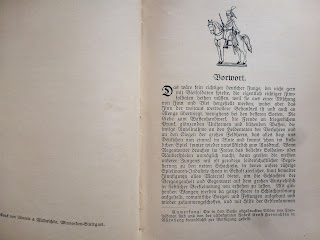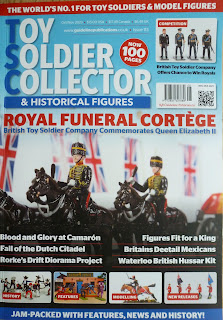Strategie und Taktik des Spiels mit Bleisoldaten (Strategy and Tactics for games with lead soldiers)
Pentagon Publishing, Stuttgart, 1917 78 pages monochrome.
I had been hunting this little tome for many years but it constantly evaded me until last year when I bit the bullet and treated myself for my birthday!
There is a pencil note inside the front cover; 20 Pfg Berlin Katz 31.13.35. It must have passed through many people's hands, or perhaps just a few.
After a Forward and Introduction the Chapters are:
1. The Ground
2. Tactical exercises in Company column
3 Small off road exercises
4. Exercises in larger groups
5. Exercises with Army Corps
6. The Battle Game
7. Fantasy Wars
8. The Strategic deployment
9. Creating the preconditions for the Battle
10. The course of the Battle
11. Closing remarks
Quite a lot packed into such a small book and it appears to be much like a military manual for linear formations.
My schoolboy conversational German has long since escaped me, along with his French counterpart, so I'm struggling with this antiquated gothic text. If you are more comfortable with it please give us all a precis of the Forward and Introduction shown here.
It contains two maps, the larger fold out one above showing the Battle of Leuthen and a smaller "Sketch of the battle of Pirot" (Serbo-Bulgarian War of 1885 - no I hadn't heard of it either)
Chapter 7 Fantasy Wars, gives listings of the disposition of Army Corps for Germany, Austria-Hungary, France, Russia, Italy, Turkey, Spain, Rumania, Serbia, Bulgaria, Greece, Montenegro, Denmark, Norway, Sweden, Belgium, Switzerland and Portugal.
Bearing in mind this was printed in 1917 here's what it has to say about England:
"Similar data can hardly be given for England, since universal conscription was only introduced during the present war, the standing army was formerly only small in number in peacetime, and was largely fragmented in foreign possessions, and the division into army corps and other tactical units took place entirely according to the needs and circumstances. During the Boer Wars, England brought out a total of about 228,000 men, i.e. about 6 army corps according to our estimates"











